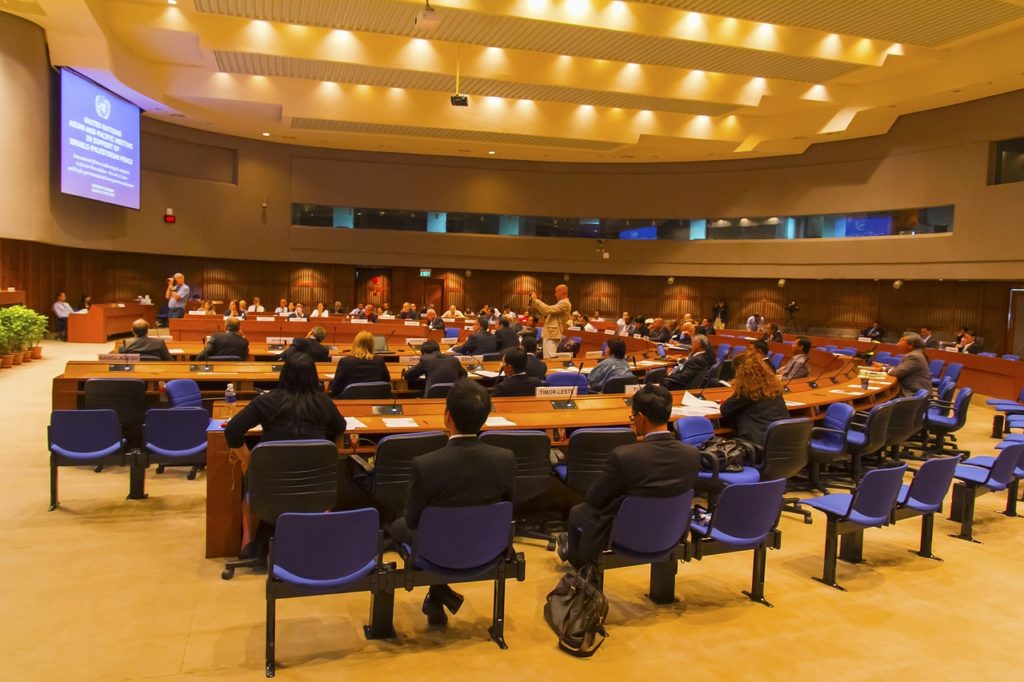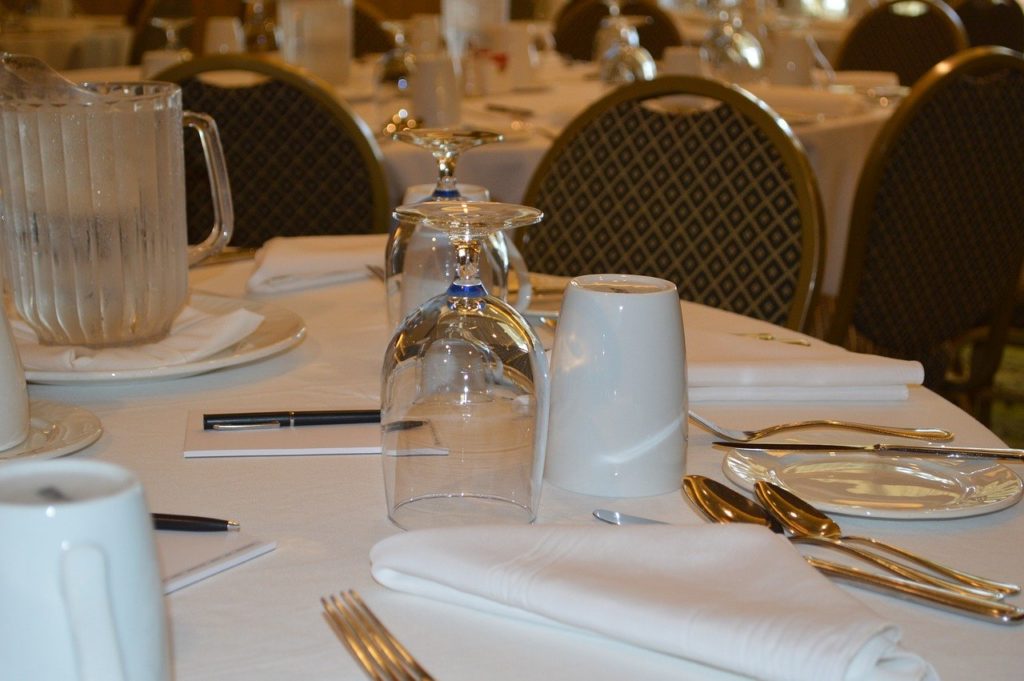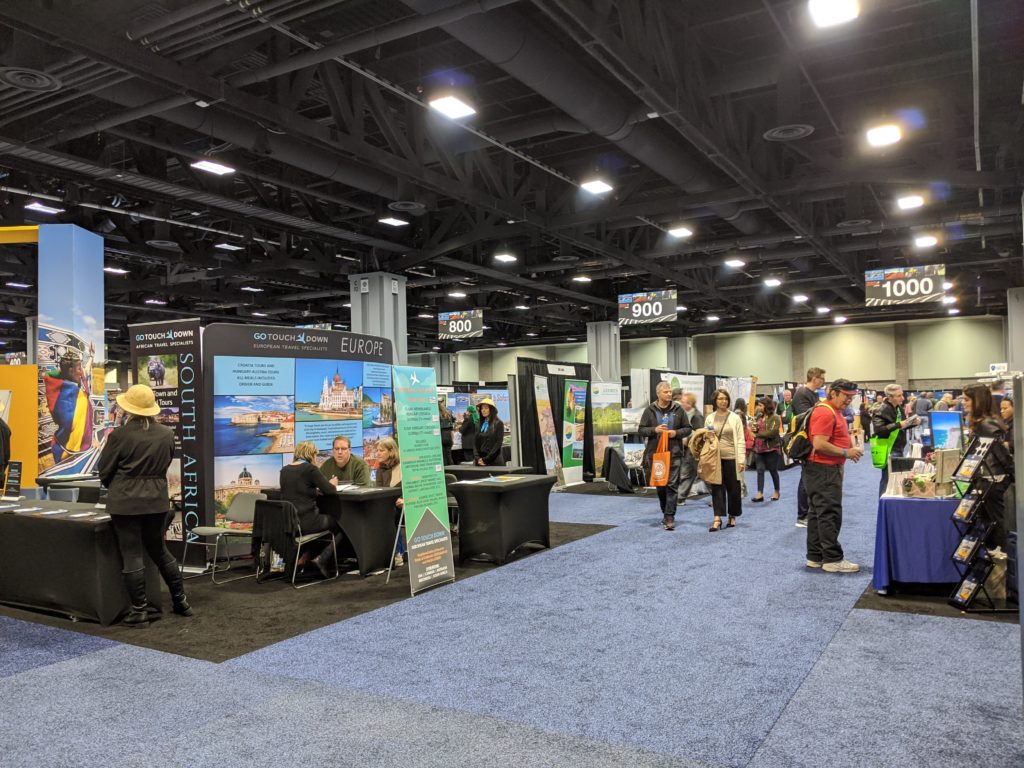
Without question, face-to-face meetings drive positive business outcomes. They create an environment where new ideas gain traction, buyers and sellers connect, and innovation thrives. As travel resumes, meetings and events will also restart, albeit with some changes. Here, Covington’s Meetings & Events team shares what you can expect to see at meetings and events of the future.
Food and Beverage Service – Dee Dee White, Meeting & Event Planner

As the world emerges from COVID-19 and face-to-face meetings make a comeback, pulling off a great meal event safely is more important than ever. Planners need to be transparent with food safety practices and protocols so that dining isn’t a cause for concern in attendees. Chefs and planners alike have a duty of care to maintain a secure and healthy environment while creating memorable meals. To that end, planners arranging meetings and events of the future should inquire about:
- Food safety practices before cooking – Where was the food sourced? Is the supply chain sanitary from the farm to the warehouse to the kitchen?
- Kitchen safety protocols – Is social distancing practiced during food preparation? Does the staff wear masks and gloves?
Event attendees can expect some changes to food and beverage service they experience at meetings and events of the future.
- Temperature checks upon entering the venue
- Fewer buffets and more plated events or boxes meals
- No self-servicing. Servers posted at buffets and coffee breaks.
- Plexiglass dividers and sneeze guards at buffets
- Social distancing throughout the dining area
- Six-seat 72” round tables set for only three guests
- Maximum of 50 people at a single seating until Phase 3 is in effect
Meeting Room Setup – Melanie Bianco

As the live meetings and events industry starts to recover, learning how to meet in groups safely is imperative. Group size, table layouts, room capacity, and even signage will look quite different.
Audio/visual powerhouse PSAV designed three unique meeting room setup options called MeetSAFE Guidelines to assist planners in creating safe meeting environments.
- MeetSAFE Design 1 is a traditional one room meeting with the presenter at the front and attendees in the same room. This will work best for smaller groups. Moving forward, capacities will be scaled in accordance with local guidelines for social distancing. Planners can still incorporate a virtual streaming component or recordings for those not physically present.
- MeetSAFE Design 2 involves the presenter on a stage, with no attendees in the room. Attendees are spread through multiple meeting rooms while the presenter is being broadcast to them. This design works well for larger groups needing to convene in person. The event can still incorporate virtual technologies to allow participation from those not attending in person.
- MeetSAFE Design 3 is like Design 2, except it spreads out even farther, with multiple rooms and presenters at multiple venues. This simultaneous presentation option allows for groups of all sizes to meet safely but still have a unified experience.
Similar to what retail stores have implemented, venues will place signage and markings for one-way traffic to minimize contact with others. Seating will undoubtedly be reduced to accommodate social distancing. For example, a 1450-square-foot room that could previously seat 40 people in the classroom-style will now fit only 10 people. As you can see, calculations for space per person will change dramatically, and meetings will require much more space.
Exhibition Halls and Trade Shows – Christi Ruddy, CMP

Many events feature trade shows as a critical component of the program. Association and corporate meeting organizers can use exhibitor fees as a revenue stream to offset expenses. A trade show booth is also a great way to educate the consumer about your product and network with attendees. In the coming months, you are likely to see smaller, regional shows appear on the horizon. Once a coronavirus vaccine is available, larger shows will resume around the globe.
Exhibition Services & Contractors Association (ESCA) drafted Health & Safety Guidance for the Exhibitions Industry that include:
- Encouraging social distancing by using floor markers with 6-foot intervals in high traffic zones such as registration and booth entrances
- Directing foot traffic by using one-way aisles and increasing aisle partitions to 8 feet
- Enacting a no-contact policy by requesting participants not to shake hands or exchange money and business cards. Traditional booth giveaways will disappear.
- Staggering entry into or flow through the hall, if possible
- Installing touchless sanitizing stations
- Deploying technology and automating as much as possible to reduce human contact. Examples include electronic check-ins for attendees and bills of lading for event materials and supplies.
- Increased budget for signage, including floor stickers, aisle arrows, general health and PPE reminders, revised maximum occupancy.
Meetings and Events of the Future
Covington Meetings & Events team stays up-to-date with the evolving industry standards in health and safety. As guidelines are updated, we are happy to assist planners so they and their participants experience the highest levels of safety and hygiene during meetings and events of the future.






Great information ladies. Looking forward to hearing about your making meeting magic again.
Thanks, Jim! The magic WILL happen again. 🙂